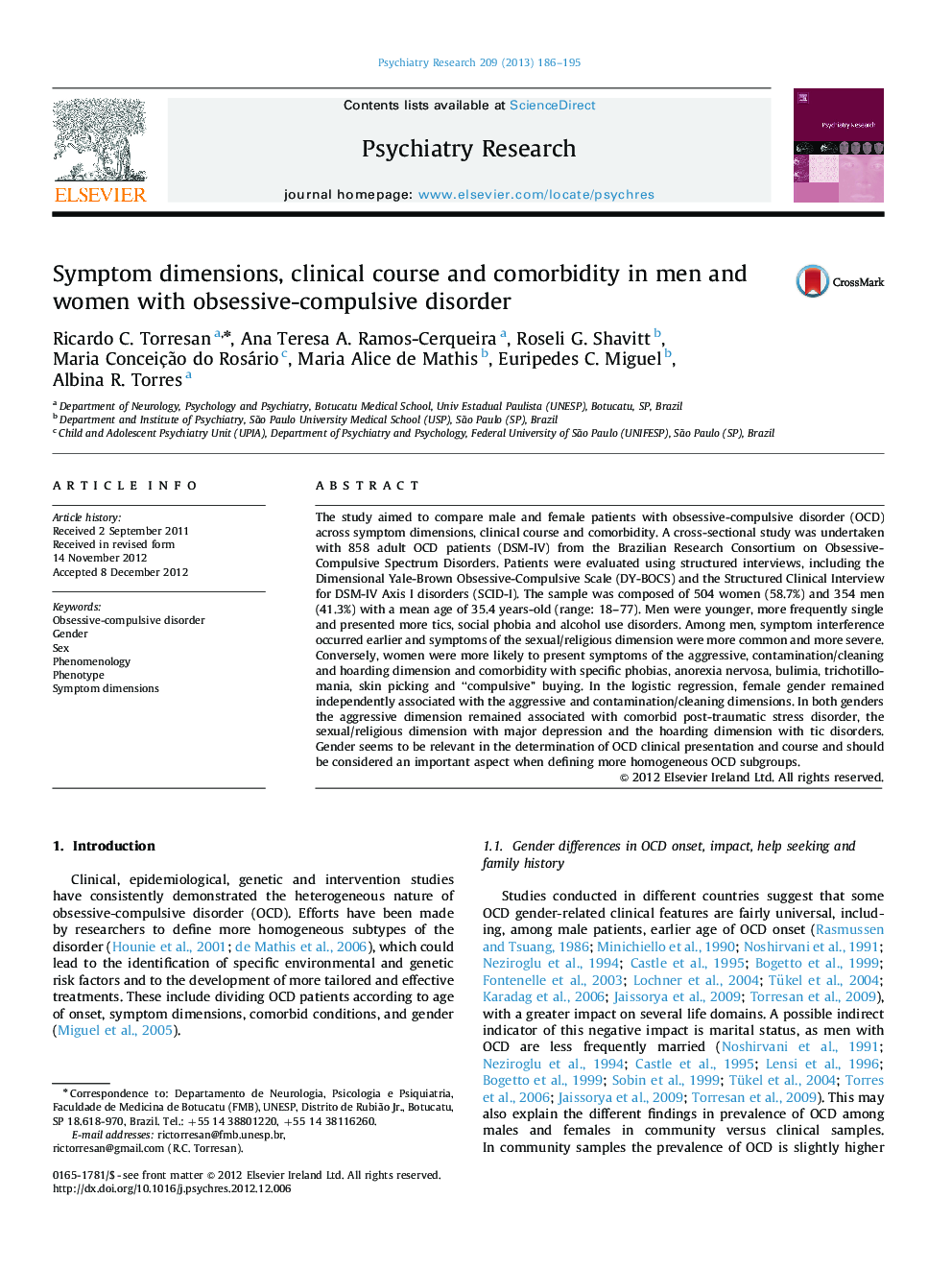| Article ID | Journal | Published Year | Pages | File Type |
|---|---|---|---|---|
| 332405 | Psychiatry Research | 2013 | 10 Pages |
The study aimed to compare male and female patients with obsessive-compulsive disorder (OCD) across symptom dimensions, clinical course and comorbidity. A cross-sectional study was undertaken with 858 adult OCD patients (DSM-IV) from the Brazilian Research Consortium on Obsessive-Compulsive Spectrum Disorders. Patients were evaluated using structured interviews, including the Dimensional Yale-Brown Obsessive-Compulsive Scale (DY-BOCS) and the Structured Clinical Interview for DSM-IV Axis I disorders (SCID-I). The sample was composed of 504 women (58.7%) and 354 men (41.3%) with a mean age of 35.4 years-old (range: 18–77). Men were younger, more frequently single and presented more tics, social phobia and alcohol use disorders. Among men, symptom interference occurred earlier and symptoms of the sexual/religious dimension were more common and more severe. Conversely, women were more likely to present symptoms of the aggressive, contamination/cleaning and hoarding dimension and comorbidity with specific phobias, anorexia nervosa, bulimia, trichotillomania, skin picking and “compulsive” buying. In the logistic regression, female gender remained independently associated with the aggressive and contamination/cleaning dimensions. In both genders the aggressive dimension remained associated with comorbid post-traumatic stress disorder, the sexual/religious dimension with major depression and the hoarding dimension with tic disorders. Gender seems to be relevant in the determination of OCD clinical presentation and course and should be considered an important aspect when defining more homogeneous OCD subgroups.
